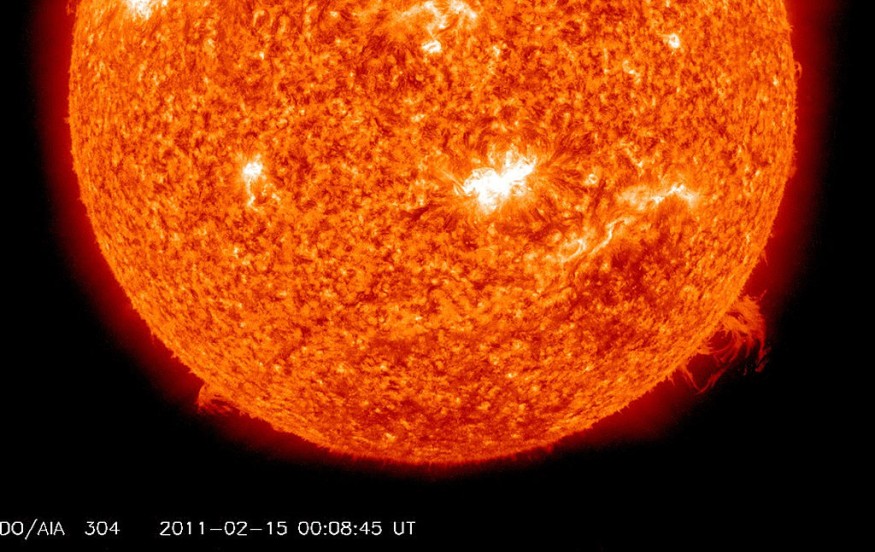A strong solar flare that NASA has observed erupting from the side of the Sun may result from a highly active solar area spinning in this direction. Therefore, several specialists warned that Earth could be able to see the effects of a massive geomagnetic storm that happened on Wednesday.
A moderate G-1 geomagnetic storm was triggered by high-speed solar winds from a "hole" in the Sun's atmosphere predicted to impact Earth's magnetic field this week. Mike Cook, who works in space weather operations, told Daily Mail that the hole had increased solar wind speeds by firing them out in a stream.

Geomagnetic Storm to Hit Storm After Experts Recorded a New Solar Flare
Spaceweather.com, citing forecasters at the National Oceanic and Atmospheric Administration's Space Weather Prediction Center (NOAA-SWPC), predicted that a minor G1-class geomagnetic storm might hit Earth after noticing that "gaseous material is flowing from a southern hole in the sun's atmosphere."
Coronal holes are regions of cooler, less dense electrified gas (or plasma) in the Sun's upper atmosphere. These are also the locations where the magnetic field lines of the Sun shoot outward into space rather than looping back in on themselves. Exploratorium, a science museum in San Francisco, explained that solar material could surge out in a torrent that may move up to 1.8 million miles per hour (2.9 million kilometers per hour).
The planets with strong magnetic fields, like Earth, absorb this solar material bombardment, causing geomagnetic storms to form. The waves of highly energetic particles that form during these storms partially compress the Earth's magnetic field. These particles agitate atmospheric molecules as they travel along magnetic field lines close to the poles, releasing energy as light to produce auroras that are vivid and resemble the Northern Lights.
There won't be much of a storm created by this material, Live Science wrote. Being a G1 geomagnetic storm, it might have a small impact on power grids and some satellite operations, such as GPS and mobile device functionalities. Additionally, those people in Maine and Michigan will get to see the aurora.
However, more catastrophic geomagnetic storms can disrupt our planet's magnetic field with enough force to send satellites plummeting to Earth. Scientists have also warned that solid geomagnetic storms might bring down the internet. According to the Space Weather Prediction Center, coronal mass ejections (CMEs), or debris that erupts from the Sun, typically take 15 to 18 hours to reach Earth.
NASA Records Sunday's Solar Flare Explosion
Meanwhile, NASA's Solar Dynamics Observatory recorded a solar flare on Sunday. A twisted plasma formation was captured in a video traveling on the Sun's left side just before it bursts into space. The footage was uploaded on its website.
A relatively weak categorization compared to previous solar flares, Sunday's flare was classified as a C9.3-class flare. Each of the four classes of flares-B, C, M, and X-has a subdivision ranging from 1 to 9 and is based on the flare's power. Newsweek noted that flares of M-class or above are the first to begin having an impact on Earth.
Solar flares are brief bursts of electromagnetic radiation from the Sun that travel at the speed of light. The Earth's ionosphere, an area of the atmosphere that contains electrically-charged particles, may be affected by the enhanced X-ray and severe ultraviolet radiation transported by flares.
RELATED ARTICLE : Giant Solar Flare to Hit Earth Again This Week: Terrifying Consequences Ahead From Holes in Sun's Corona
Check out more news and information on Space in Science Times.
© 2026 ScienceTimes.com All rights reserved. Do not reproduce without permission. The window to the world of Science Times.










